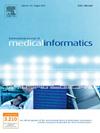Connecting verified databases with clinical practice and the patient’ s experience through omnichannel communication
IF 3.7
2区 医学
Q2 COMPUTER SCIENCE, INFORMATION SYSTEMS
International Journal of Medical Informatics
Pub Date : 2024-09-29
DOI:10.1016/j.ijmedinf.2024.105639
引用次数: 0
Abstract
Introduction
Patient-reported outcomes (PRO) collect data directly from patients. These data are utilized in clinical practice, helping decision-making. Studies emphasize the importance of omnichannel communication (WhatsApp, e-mail, SMS) with healthcare professionals and patients. Omnichannel communication enables the integration of different communication channels to improve the end-client experience. In addition to the means of communication, the daily practice of professionals requires different activities that can be performed in distinct systems. The existence of various separate systems for other activities in medical practice may result in complexities and bottlenecks in their use by healthcare professionals and patients. Objective: To present the Digital Health Ecosystem (DHE) that unifies scientific research with medical practice in omnichannel communication and mechanisms to verify the authenticity and integrity of the data collected and stored. Methodology: The system requirements and needs were met utilizing the Iconix development methodology. Microsoft Dot Net was used to develop software. Usability, usefulness and user satisfaction with the system were measured using the Post-Study System Usability Questionnaire (PSSUQ). Results: Omnichannel communication was utilized to contact patients and healthcare professionals autonomously. A single system enabled the carrying out of patientreported outcome data collection, telemedicine, image storage, and notes from patient consultations. The data was collected through structured questionnaires via link and chatbot. The functionalities created in the HDE allowed the integrity and authenticity verification of the data collected and stored. Conclusion: Personalized omnichannel communication via links and chatbots using WhatsApp, E-mail, and SMS accelerates autonomous interaction with patients and healthcare professionals. In addition, the structured and non-structured data were stored in the EHD and able to be verified for integrity and authenticity.
通过全渠道通信将经过验证的数据库与临床实践和患者体验联系起来
导言患者报告结果(PRO)直接从患者那里收集数据。这些数据可用于临床实践,帮助决策制定。研究强调了与医护人员和患者进行全渠道沟通(WhatsApp、电子邮件、短信)的重要性。全渠道沟通能够整合不同的沟通渠道,改善最终客户的体验。除了通信手段外,专业人员的日常工作还需要不同的活动,这些活动可以在不同的系统中进行。医疗实践中的其他活动存在各种不同的系统,这可能会导致医护人员和患者在使用这些系统时遇到复杂性和瓶颈。目标介绍数字医疗生态系统(DHE),该系统将科学研究与医疗实践统一起来,实现全渠道交流,并建立机制来验证所收集和存储数据的真实性和完整性。方法:采用 Iconix 开发方法满足系统要求和需要。使用 Microsoft Dot Net 开发软件。使用 "研究后系统可用性问卷"(PSSUQ)对系统的可用性、实用性和用户满意度进行了测量。结果利用全渠道通信自主联系患者和医护人员。患者报告的结果数据收集、远程医疗、图像存储和患者会诊记录均由单一系统完成。数据是通过链接和聊天机器人的结构化问卷收集的。HDE 中创建的功能可对收集和存储的数据进行完整性和真实性验证。结论通过链接和聊天机器人使用 WhatsApp、电子邮件和短信进行个性化全渠道交流,加快了与患者和医疗保健专业人员的自主互动。此外,结构化和非结构化数据都存储在 EHD 中,并能够验证其完整性和真实性。
本文章由计算机程序翻译,如有差异,请以英文原文为准。
求助全文
约1分钟内获得全文
求助全文
来源期刊

International Journal of Medical Informatics
医学-计算机:信息系统
CiteScore
8.90
自引率
4.10%
发文量
217
审稿时长
42 days
期刊介绍:
International Journal of Medical Informatics provides an international medium for dissemination of original results and interpretative reviews concerning the field of medical informatics. The Journal emphasizes the evaluation of systems in healthcare settings.
The scope of journal covers:
Information systems, including national or international registration systems, hospital information systems, departmental and/or physician''s office systems, document handling systems, electronic medical record systems, standardization, systems integration etc.;
Computer-aided medical decision support systems using heuristic, algorithmic and/or statistical methods as exemplified in decision theory, protocol development, artificial intelligence, etc.
Educational computer based programs pertaining to medical informatics or medicine in general;
Organizational, economic, social, clinical impact, ethical and cost-benefit aspects of IT applications in health care.
 求助内容:
求助内容: 应助结果提醒方式:
应助结果提醒方式:


